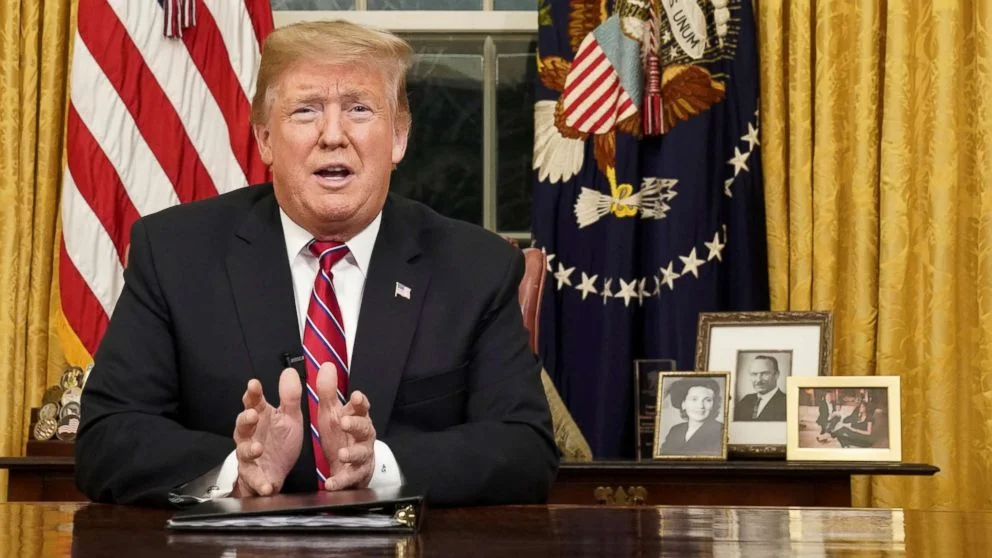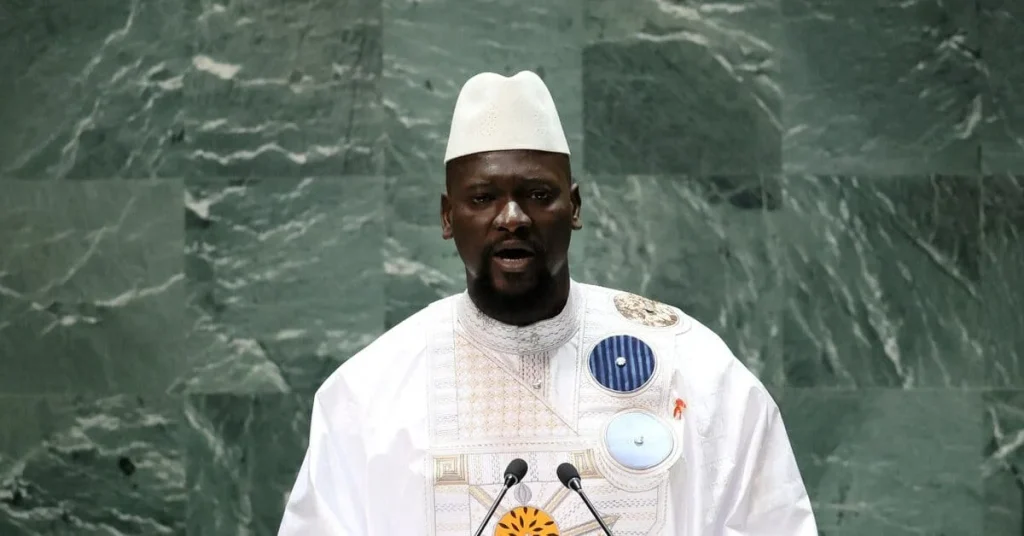President Donald Trump is standing firm, refusing to meet top Democrats until the U.S. government reopens, now in its third week of a crippling shutdown.
On October 21, 2025, Trump told reporters he’d only sit down with Senate Minority Leader Chuck Schumer and House Minority Leader Hakeem Jeffries if they agree to end the standoff.
“I want to talk, but the country must open first,” he said, dismissing their open-ended invitation for talks.
The shutdown, which began October 1, has furloughed thousands of federal workers and frozen $1.7 trillion in agency funding roughly a quarter of the annual budget. With no resolution in sight, tensions are skyrocketing, and Americans are feeling the pinch.
Healthcare at the Heart of the Fight
The deadlock hinges on a key issue: an expiring Affordable Care Act (ACA) tax credit set to end December 31. Democrats, with all but three senators holding firm, refuse to back a Republican-led temporary funding bill without extending the subsidy.
Without it, millions face soaring healthcare premiums, which Democrats call a “healthcare disaster.” Republicans, controlling Congress, want to push ACA talks to year-end, focusing now on reopening government.
Social media is ablaze with #EndTheShutdown, as citizens voice frustration over closed agencies and delayed services. The standoff is testing Washington’s ability to govern, with both sides digging in.
Republicans Eye Extension
Senator Susan Collins, who leads the Senate Appropriations Committee, admitted on October 21 that the shutdown’s dragging on too long. “We’ve burned weeks we need an extension,” the Maine Republican said, stressing she wants funding secured before 2026.
The current stopgap bill, passed by the House last month, expires November 21, and Collins warned that without action, agencies could stay shuttered longer.
Senate Majority Leader John Thune echoed her, saying more time is needed to finalize the 12 annual spending bills that fund federal programs.
With Republicans holding a slim 53-47 Senate majority, Thune needs at least seven Democratic votes to hit the 60-vote threshold for passing the temporary bill.
Trump’s Strategy Session
Trump met with Republican senators on October 21, but the ACA wasn’t on the table, said Senator Mike Rounds of South Dakota, who attended. Republicans are playing hardball, prioritizing government operations over healthcare talks.
“We’ll deal with subsidies later,” Rounds hinted, reflecting the party’s push to separate the issues.
The strategy leaves Democrats fuming, as they argue the ACA extension is non-negotiable. Schumer and Jeffries have called for immediate talks, accusing Trump of holding workers hostage. The furloughs, affecting everyone from park rangers to tax processors, are sparking public outcry.
Economic and Political Fallout
The shutdown’s ripple effects are massive. Closed agencies mean delayed services, from veteran care to food inspections.
The $1.7 trillion freeze threatens economic stability, with small businesses and federal employees hit hardest. If unresolved, the crisis could drag into the holiday season, amplifying public anger.
Democrats warn that premium hikes without the ACA subsidy could devastate families, while Republicans bet on public pressure to force a deal. The clash has turned Capitol Hill into a battleground, with both sides blaming each other.
What’s Next?
As November 21 looms, pressure mounts for a breakthrough. Collins and Thune are pushing for a short-term funding fix, but Democrats won’t budge without ACA guarantees. Trump’s refusal to meet keeps the stalemate alive, leaving workers and services in limbo.
Will Washington compromise, or will the shutdown stretch into 2026? The clock’s ticking, and the nation’s watching.
READ ALSO: Can Artificial Intelligence Help Doctors Beat Burnout?






